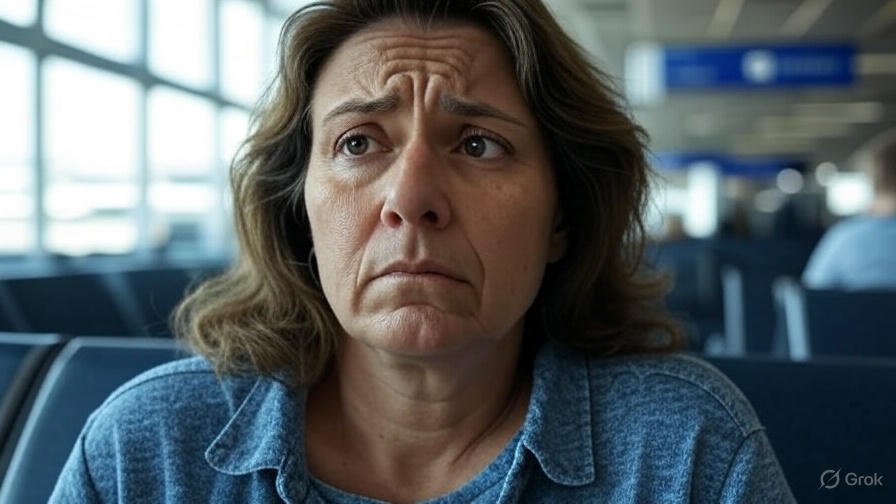United Airlines Outage: On the evening of August 6, 2025, United Airlines faced a major system outage that grounded flights across the United States, leaving thousands of passengers stranded and frustrated. The disruption, which began around 6:12 p.m. ET, affected the airline’s Unimatic system—a critical tool that manages flight data like weight, balance, and scheduling. While the issue was resolved within a few hours, the ripple effects lingered, causing delays and cancellations into the next day. Here’s a look at what happened, why it matters, and what it means for travelers.
Table of Contents
What Caused the Outage?
The outage stemmed from a technical glitch in United’s Unimatic system, which feeds essential flight information to other operational systems. Unlike recent cybersecurity scares in the airline industry, United confirmed this was not a cyberattack but a software issue. The exact cause remains unclear, as the airline has not released detailed information. The Federal Aviation Administration (FAA) reported ground stops at major hubs like Chicago, Denver, Newark, Houston, and San Francisco, halting all United mainline flights at their departure airports.
- Key Impact: Over 1,000 flights delayed, with 6% canceled, per FlightAware.
- Affected System: Unimatic, handling weight, balance, and flight time data.
- Not Affected: Flights already in the air and United Express regional flights.
This wasn’t the first tech hiccup for United. Just weeks earlier, on July 25, 2025, a fire alarm at their headquarters triggered another nationwide ground stop, showing how fragile airline systems can be.
Passenger Frustrations and Experiences
Travelers took to social media to vent their frustrations, painting a vivid picture of the chaos. Many were stuck on tarmacs for hours, with some flights returning to gates so passengers could deplane. One passenger in New Orleans tweeted, “Stuck on the tarmac thanks to a United system outage. Zero planes moving. No weight & balance data. Just vibes.” Another in Denver reported waiting nearly two hours with no updates, highlighting the lack of communication during the crisis.
- Social Media Complaints: Passengers reported poor updates and long waits.
- Compensation Offered: United promised to cover hotels and rebooking costs for some.
- Emotional Toll: Frustration and uncertainty dominated traveler sentiments.
United responded to some complaints on X, apologizing and asking for patience while they worked to resolve the “system error.” For many, though, the lack of clear timelines added to the stress of an already disrupted travel day.
The Broader Impact on Air Travel
The outage didn’t just affect United passengers—it sent shockwaves through the U.S. air travel system. With 35% of United’s flights delayed, airports like O’Hare and Newark saw significant congestion. The FAA warned that residual delays could persist, as airlines struggled to clear the backlog. This incident is part of a larger pattern of disruptions in the industry, from staffing shortages to aging infrastructure, as noted by the FAA’s National Airspace System reports.
- Industry Context: Recent outages at Alaska and American Airlines show systemic issues.
- FAA’s Role: Offered support to United but highlighted recovery challenges.
- Long-Term Concerns: Aging tech and weather-related delays are growing problems.
The timing couldn’t have been worse, as air travel demand remains high post-pandemic. With climate change increasing extreme weather events, experts predict a 30% rise in flight delays over the next two decades, compounding tech-related woes.

United’s Response and Recovery Efforts
By 10:30 p.m. ET on August 6, United announced that the underlying issue was resolved, and flights began resuming. The airline emphasized that safety was their top priority and committed to covering “controllable” delay expenses, like hotels, for affected passengers. However, the recovery process was slow, with ground stops lingering at some hubs. United’s teams worked overnight to rebook passengers and clear the backlog, but the lack of a clear timeline frustrated many.
Transportation Secretary Sean Duffy noted that the issue was specific to United and not tied to broader air traffic control systems, reassuring travelers that the FAA was in close contact with the airline.
What This Means for the Future
This outage is a wake-up call for the airline industry. United’s reliance on systems like Unimatic highlights the risks of outdated technology. While the airline has invested in tech upgrades, as CEO Scott Kirby mentioned during a July earnings call, incidents like this show there’s still work to be done. Travelers are left wondering how airlines can prevent such disruptions in the future, especially as air travel becomes more complex with rising passenger numbers and climate challenges.
For now, passengers are advised to check flight statuses frequently, keep receipts for compensation claims, and consider travel insurance for added protection. As one traveler put it, “United needs a reset button.” Until then, patience—and a backup plan—might be the best tools for navigating the skies.